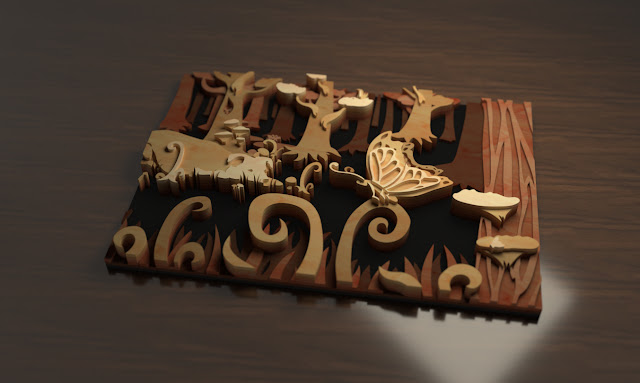Week 6 - Organic Object
3D scanning objects with my phone was so cool! I had no idea that it was possible and they turned out really good with very little effort.
I scanned a few simple sculptures and stuffed animals I had and I like them too much to not include them all here.
This slug fidget toy was the most difficult to scan, and ended up with worst scan, but I really wanted to
try modelling it in Rhino because of its combination of geometric and organic shapes.
I took several photos of the slug toy to import into Rhino to base my modelling off of. I found the hardest/most annoying part of this project was trying to align and scale the reference images to each other so I could model accurately.
I started out attempting to model the more organic shapes of the slugs antenna, using the Sweep2 command and CageEdit, but had issues with the refence images not being the same scale and ended up redoing this part later on.
Next I started started making the spheres that make up the body of the slug. Having a uniform object like a sphere helped me scale the references images so they were in proportion to each other, but I still wasn't able to get them perfect.
I started out making a sketch of the circles from the top view so I would know the size and location of every sphere I needed beforehand. The circle from 3 points tool is perfect for quickly tracing a circle from a reference image.
I used the BooleanSplit command to cut each sphere to the right shape using a plane.
The final model :)
One thing I noticed while working on this project was I had to do a lot of organization. I was regularly looking at all 4 views, and had to make sure there was no extra clutter to keep from getting to confused or overwhelmed. I used lots of layers that could be locked and unlocked or hidden and shown. I also used the lock/unlock and hide/show commands a lot on specific objects to make sure I could see and edit only what I needed to. I was also switching between view modes of wireframe, shaded, ghosted, and rendered.

.jpg)















Comments
Post a Comment